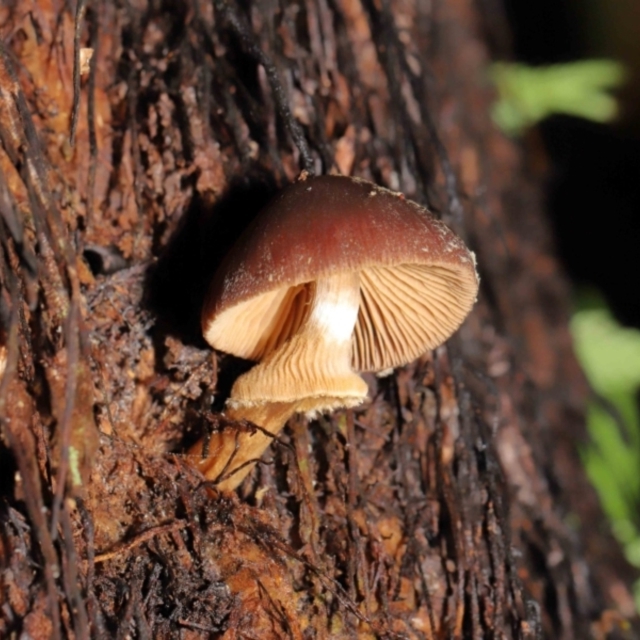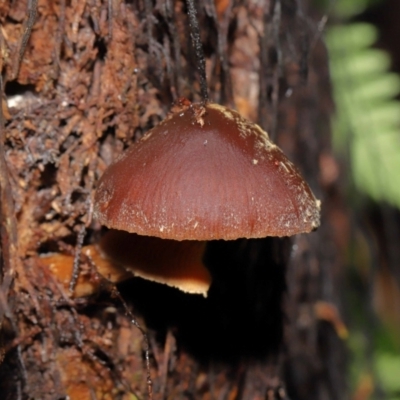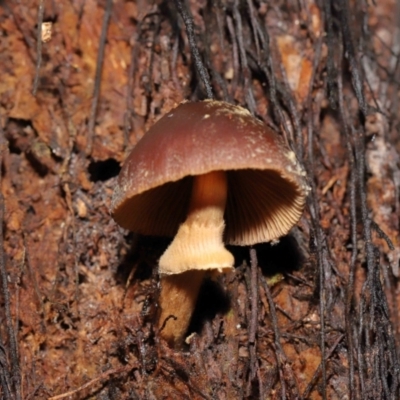Descolea sp.
The fruitbody is a mushroom, consisting of a cap atop a central stem. The caps are conical but may flatten with age, in shades of brown, smooth or with light brown sales and up a few centimetres in diameter. The gills are paler brown to yellowish brown. The brownish stem may grow to about 5 centimetres long and around a half centimetre wide.
There is a scanty universal veil but a membranous partial veil. Once the cap has expanded the partial veil remains as a well-developed skirt around the stem (sometimes sticking out more-or-less at right-angles to the stem), distinctly striate on its upper side.
Spore print: yellow-brown.
The fruitbodies are usually found on the ground (but sometimes on rotten wood) in forests or woodlands.
Look-alikes
There are many species that produce smallish, brown mushrooms. In many the gill or spore print colours are different or, if a partial veil is present, it doesn't remain as such a well-developed skirt.
In the genus Pholiotina gill and spore print colours are similar and membranous partial veils are found in some species. So far, only a few few species of Pholiotina have been reported from Australia. Looking worldwide, many species in the genus are fairly delicate with smaller caps, very thin stems and small skirts. Some chunkier species are known with some potential for confusion with Descolea. It seems that in such Pholiotina species you find no scales on the cap surface.
Descolea sp. is listed in the following regions:
Canberra & Southern Tablelands
Species information
- Descolea sp. Scientific name
- Common name
- Not Sensitive
- Local native
- Non-invasive or negligible
- Up to 607.6m Recorded at altitude
- Machine learning
Location information
-
Maps
ANBG Higgins Woodland Mongarlowe River -
Places
Mongarlowe, NSW














